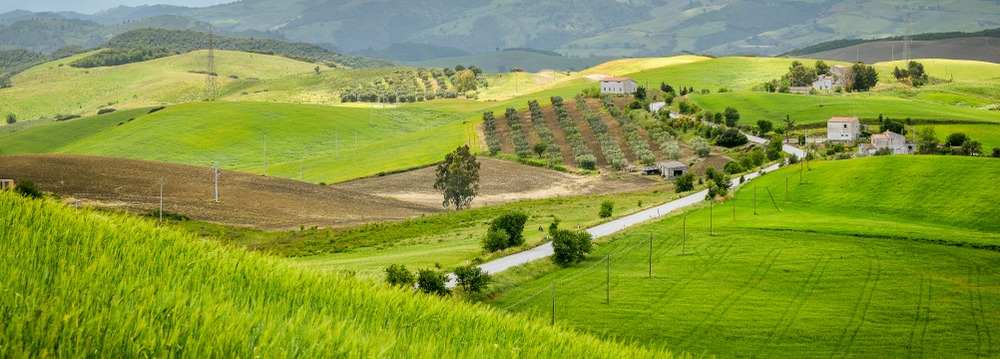
Geospatial Artificial Intelligence (GeoAI) has been at the forefront of spatial analytics with the advent of huge open source Earth Observation (EO) data and easy accessibility over cloud platforms, offering new ways of solving problems across industries such as energy, utilities, mining, supply chain, and in ESG compliance.
EO has proven its efficacy in mapping and monitoring the health/condition of crops or vegetation. A time-series EO assessment of crop phenology helps study the crop health, underlying soil, and waterbodies, can enable recommendations for suitable seeds, fertilizers, and pesticides, and measure the impact of environment and land management. This paper provides a comprehensive overview of machine learning operations (MLOps) in GeoAI in sustainable agriculture. It discusses enabling a cloud-agnostic platform with an automated pipeline built on comprehensive EO analytics using MLOps. It further describes a framework of open-source tools that help build an end-to-end GeoAI pipeline and presents select case studies done in agriculture.
Environment and land management in most countries entail encouraging good farming practices that ensure sustainable, intensive agriculture, and periodically monitoring and assessing these farming practices. Considering field inspections are time-consuming and cost-intensive, it often calls for a collaborative approach of monitoring farmlands to understand the area of parcel cropped and assess the implementation of farming practices and farm management remotely. With remote analytics, agencies locate farm areas where vegetation and soil health is under stress, either due to poor water supply or non-compliance with best practices. They can help organize field inspections and crew for select high-risk regions and plan mitigation to restore land/ environment health.
The type of crops or vegetation grown on the farm directly impacts the health of the soil and its productivity, which determines its sustainability in future agriculture. Therefore, to achieve the UN’s climate change target of Net Zero by 2050, soil restoration and protection have become core issues in the 2020 Agriculture Bill. The new farming rules for water require following best practices to reduce soil and water erosion.

With the humongous spatial data from earth observation and advances in analytical capabilities, there is a need to optimize and automate the DevOps pipeline for GeoAI solutions. MLOps addresses this by provisioning an automated machine learning platform for effective end-to-end processing. The Crop Variety Classification—based on phenological characteristics throughout the year for the inter-seasonal crop species as identified by their spectral profiles—has been considered a basis for classifying the crops and analyzing crop health.
Machine learning operations (MLOps) is an engineering practice that provides a seamless pipeline covering data engineering and machine learning along with DevOps. It covers aspects such as best practices and a DevOps culture in provisioning end-to-end conceptualization, implementation, monitoring, deployment, and scalability of machine learning solutions. MLOps aims to facilitate the creation of machine learning products by leveraging CI/ CD automation; workflow orchestration; reproducibility; versioning of data, model, and code; collaboration; continuous ML training and evaluation; ML metadata tracking and logging; continuous monitoring; and feedback looping.
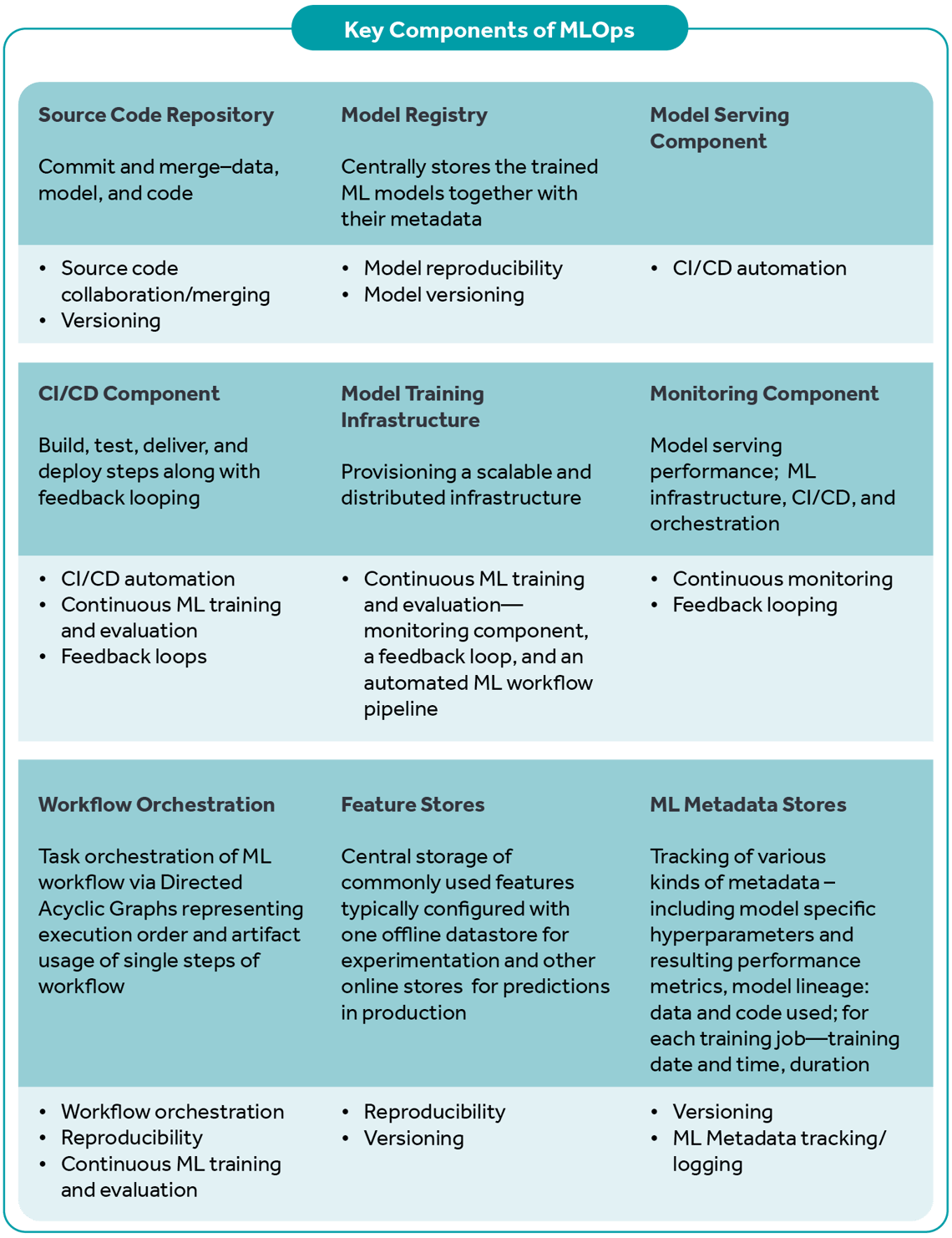
Figure 1: Solution Components
Based on the above components, a generalized MLOps end-to-end architecture typically features:
This covers the iterative process of data extraction, data preparation and validations, model refinement, validations, and finally, pushing to the model registry.
Deployment of the final model and pipeline on Kubernetes.
This step covers training models, feedback looping, and retraining tasks.
This step analyzes the business problem to be solved using ML, designs the overall ML solution, tools, and technology, determines what data and possible sources of data for EDA, trains models, and evaluates the distribution and quality of the data, whether annotated/labeled.
This step covers data transformation rules (normalization, aggregations) and cleaning rules to bring the data into a usable format and defining feature engineering rules such as the calculation of new and more advanced features based on other features and using feedback looping.
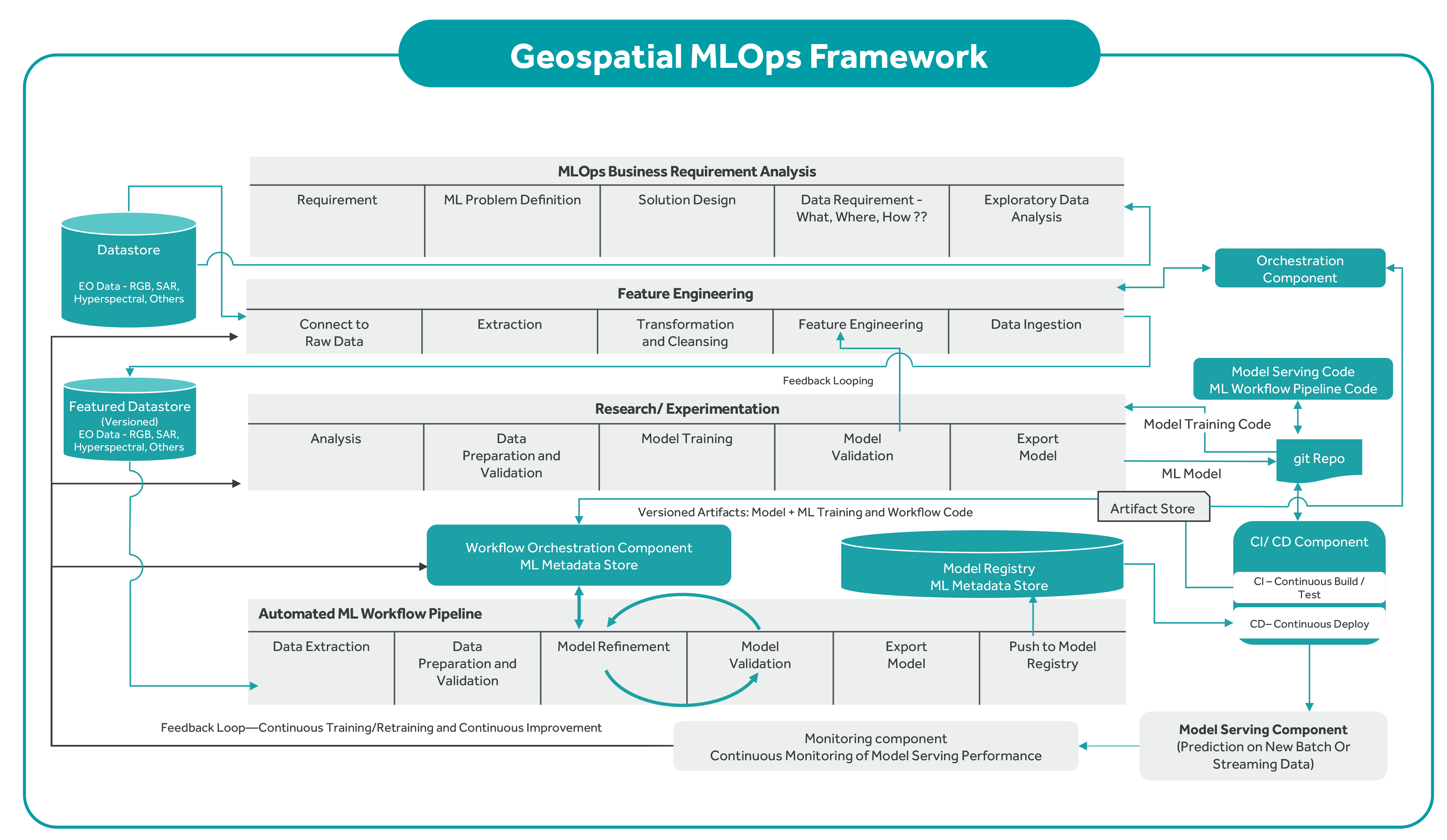
Figure 2: Solution Architecture
A generic open-source MLOps framework with Kubeflow as the core engine or platform on top of Kubernetes is depicted below. It indicates select open-source tools to execute a series of tasks for end-to-end MLOps.
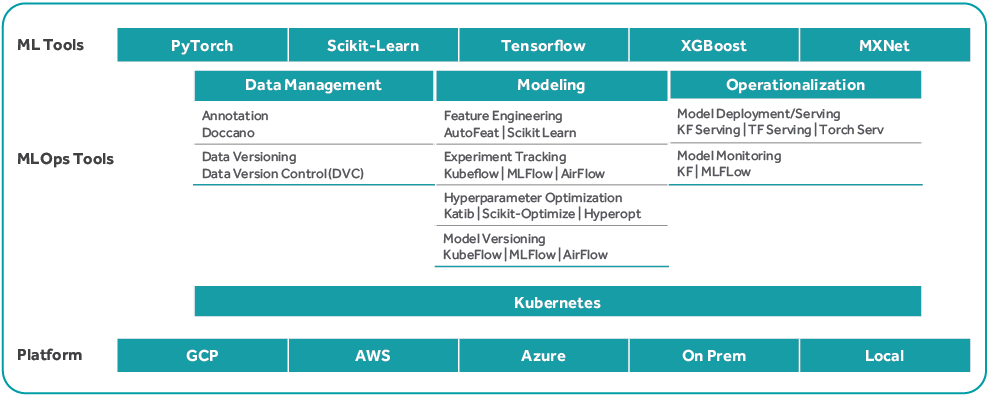
Figure 3: MLOps Framework
Kubeflow builds on Kubernetes as a system for deploying, scaling, and managing an MLOps system. The Kubeflow configuration interfaces help users specify the ML tools required for the workflow. The workflow can be deployed over various clouds, local, and on-premises platforms for experimentation and for production use.
MLOps provides DevOps for an ML platform to effectively collaborate with data and business analysts, engineers, data scientists, and researchers in provisioning accelerated model development and its deployment with the help of monitoring, validation, and management systems for machine learning models. It enables streamlining model training and model deployment pipelines, and using continuous integration/continuous delivery to simplify retraining and integrate machine learning easily into existing release processes. It also enables advanced data bias analysis to improve model performance over time.
Evaluates the importance of features and creates more advanced models with minimal bias using uniform distribution metrics.
Reduces variation in model iterations and provides resiliency for enterpriselevel scenarios with reproducible learning and models.
Ease of deployment of models on production environment.
Uses dataset registries and advanced model registries to track resources.
Creates audit trails to meet regulatory requirements and automatically trace experiments.
Packs models quickly, ensuring high quality at every step through profiling and model validation.
Provides improved traceability by tracking code, data, and metrics in the execution log; keeps track of version history and model origin to enable auditing.
Uses built-in integration with Azure DevOps or AWS CodeBuild and GitHub actions to plan, automate, and manage workflows efficiently; uses automatic scaling and managed clusters of CPUs and GPUs with distributed learning in the cloud.
Cyient used MLOps using Sentinel 2 Optical Imageries for a marquee government agency to identify crop variety and health. The work entailed satellite-based monitoring with Computer Vision to detect and locate good and healthy farming practices. Keys tasks included:
The Crop Variety Classification and Health Analytics were based on biophysical indicators—NDVI, LAI, and leaf chlorophyll of the plantation—estimated using high-resolution open-source satellite imageries that distinguished each crop species based on the spectral signature of crop phenology. Some of the key vegetation indices thus estimated and reviewed were:
Although the ML-driven analysis generated a noise-free, highly accurate, and consistent output, its dependency on ground truth validation was a major bottleneck. To train and validate the model, ground truths were crucial to classify and evaluate every agricultural zone and identify crop variety. The model helped identify wheat and potato with precision and accuracy.
Seasonal data of the growing period of the crop were considered to assess the vegetation sensitivity of the NIR and Red spectrums; the Red Edge difference index was applied to accentuate the species-wise phenology variance. The Red Edge is a region in the Red-NIR transition zone of the vegetation reflectance spectrum. It marks the boundary between absorption by chlorophyll in the red visible region and scattering due to the internal leaf structure in the NIR region. As a result, this part of the spectrum reflects any slight change in the bio-chemical structure and physical parameters during the plant phenology, either by biomass accumulation or impact of stress.
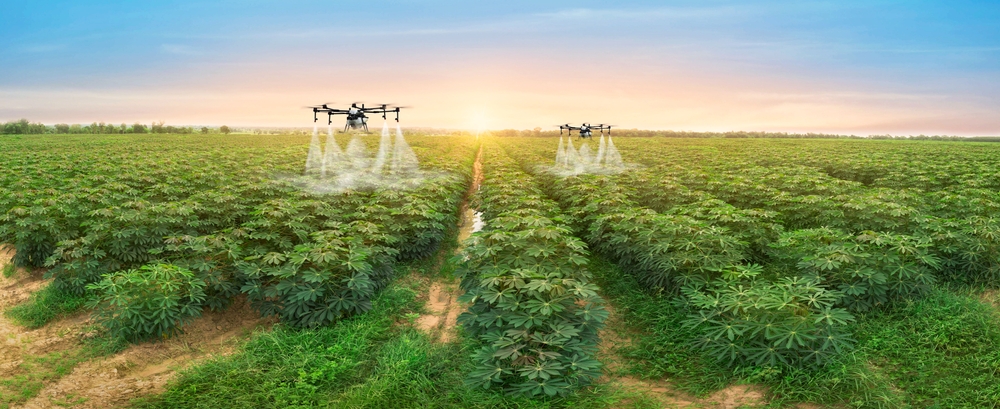
The crop and stress identifier model was trained over various iterations to improve its performance. The following aspects were considered in refining the training labels:
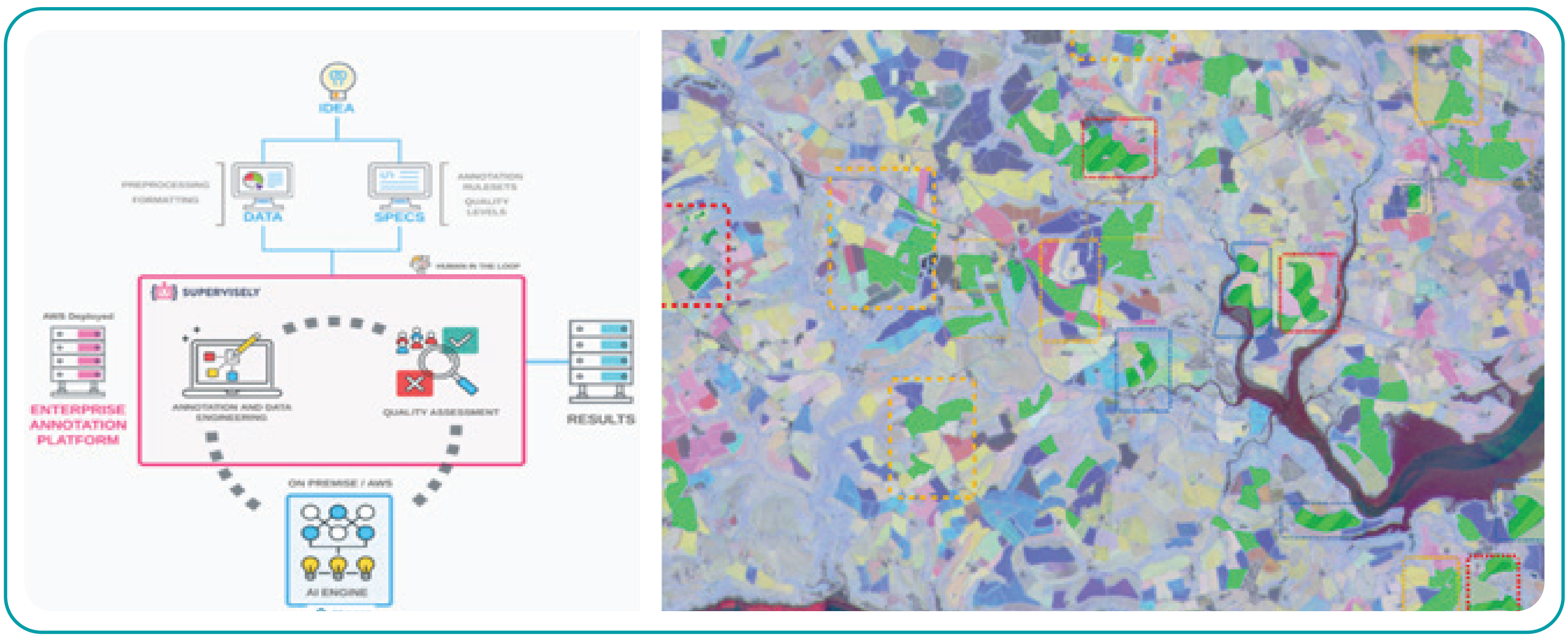
Figure 5: ML- vs. DL-based crop monitoring outcome
The crop classifier/detector was trained to identify crops automatically and predict without any ground truth input. The trained model was deployed and tested in an unknown region to assess its efficacy. The figure above (Fig 5), exhibits the results where the region highlighted in green, points to wheat cultivation. The predicted wheat parcels were validated with the farmers' claim data (highlighted in yellow) and were having a 90% match.
The model was retrained with additional region and variability, and the prediction improved. Figure 5: ML- vs. DL-based crop monitoring outcome Within the project's timeline, Cyient created an annotations library with 1000+ scenarios.
Once generated by the model (either ML or DL), the detected output goes through a visual inspection for QC to guarantee data quality. The existing ML model has accuracy confidence of >85%, and we apply visual quality checks to a certain extent to clean up unwanted polygons and false positives. As per the DL model (accuracy confidence of 86%), more training is required from different geographies to enhance the model's robustness and consistency.
The next steps would be to build a comprehensive system of precision agriculture—crop yield, production quantity forecasting, identifying crop stress areas, supply chain for seeds, fertilizers, pesticides, and produce, estimating soil organic carbon, and so on. The solution would cover building an expert system that uses soil, water (drainage pattern), weather conditions, and other factors to strategize for enhanced production. Our potential partnership with commercial data providers such as Planet and Wyvern and other EO data providers can help build extended capabilities.
Cyient (Estd: 1991, NSE: CYIENT) is a leading global engineering and technology solutions company. We are a Design, Build, and Maintain partner for leading organizations worldwide. We leverage digital technologies, advanced analytics capabilities, and our domain knowledge and technical expertise, to solve complex business problems.
We partner with customers to operate as part of their extended team in ways that best suit their organization’s culture and requirements. Our industry focus includes aerospace and defense, healthcare, telecommunications, rail transportation, semiconductor, geospatial, industrial, and energy. We are committed to designing tomorrow together with our stakeholders and being a culturally inclusive, socially responsible, and environmentally sustainable organization.
For more information, please visit www.cyient.com
Nihar R. Sahoo heads Geospatial Solutions in the CTO Unit. He has over 23 years of experience in architecting and implementing enterprise geospatial and GeoAI solutions across industries. He provides thought leadership on spatial data science, earth observation, and allied areas.
Cyient (Estd: 1991, NSE: CYIENT)delivers Intelligent Engineering solutions for Digital, Autonomous and Sustainable Future
© Cyient 2024. All Rights Reserved.